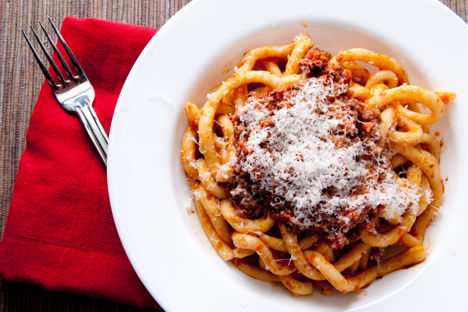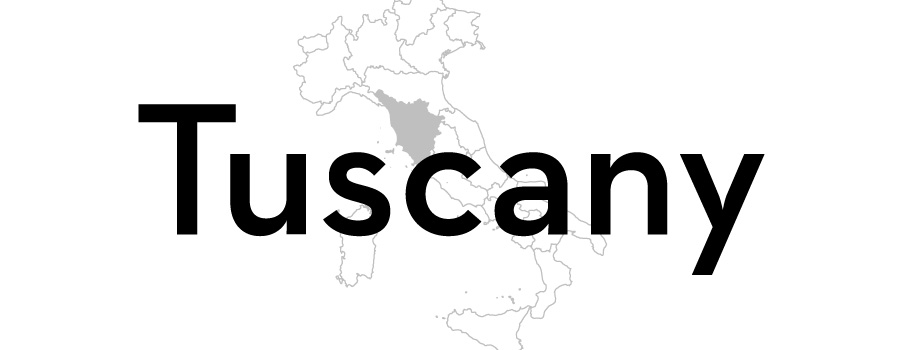
The fresh pastas of Tuscany
Tuscany might not be especially well known for its pasta, but there are still plenty of fresh varieties made throughout the region. Giulia Scarpaleggia talks us through the local specialities.
The fresh pastas of Tuscany
Tuscany might not be especially well known for its pasta, but there are still plenty of fresh varieties made throughout the region. Giulia Scarpaleggia talks us through the local specialities.
View more from this series:
Italy's regional cuisineWhen I teach a Tuscan cooking class, I always ask my students which recipe they think is most representative of Italian cuisine and the country’s culinary traditions. Pasta is the answer I receive nine times out of ten.
Talking about Italian pasta in general, though, is a bit too simplistic. Dry pasta – such as spaghetti, macaroni, penne or farfalle – is usually found in southern Italian cuisine. In the northern part of Italy, risotto and polenta are definitely more traditional than pasta; this is due mainly to what is farmed in the area, which is rice and corn.
In Tuscany the staple ingredient is stale bread, which is the star of many a soup and salad, from ribollita to panzanella and pappa al pomodoro. But we have a good share of fresh pasta recipes, too, even though Emilia-Romagna is universally acknowledged as the region where fresh pasta, lasagne and tortellini are worshipped and made by the book.
Traveling through Tuscany is a tasty experience and the region’s fresh pasta is a great way to discover the differences between the various areas of this region.
Lunigiana is a borderland – a slice of Tuscany wedged between Liguria and the sea, the Apuan Alps and Emilia-Romagna. The neighbouring territories influence its accent and its cuisine, which is based on everything that comes from the forest; chestnuts and mushrooms have fed generations of farmers. Fresh pasta here is made partially with chestnut flour – you can find lasagne bastarde, a fresh pasta cut into lozenges, in many small casual osterias or, even better, in family meals. They are served with olive oil and Parmesan or with a walnut and cream sauce.
The nearby area of Garfagnana is still influenced by Emilia; on Sunday women roll out their fresh pasta by hand and make tortellini, just as in Modena. Chestnut flour is used also in Garfagnana, both in fresh pasta and potato gnocchi.
Another interesting area is Mugello. A mountainous area just north of Florence, it was the hunting reserve of the Medici family during the Renaissance. Being a border area, the culinary tradition of Mugello shows influences from Emilia, Romagna and Florence. The locals borrowed tortelli from Emilia and stuffed it with a cheap, meatless filling such as mashed garlicky potatoes or chestnuts with a hint of nutmeg. In some areas of Mugello they still mix ricotta into the potatoes, showing an even stronger influence from the nearby region.
In Florence you won’t find the usual fresh pasta you are accustomed to, but crespelle with ricotta and spinach – a typical Florentine dish. They look like thin pancakes and are rolled up as cannelloni, as though they were fresh pasta. Apparently Caterina de' Medici, a Florentine noblewoman who married the future king of France Henry II in 1533, was so attached to her native food that she brought a brigade of Florentine chefs with her to France and our crespelle eventually became crêpes.
The most popular Tuscan ravioli are those made in Maremma, with a filling of ricotta cheese and spinach and sometimes a hint of marjoram or nutmeg, with wide edges of pasta all around the soft heart. In the past borage was used instead of spinach, as it was a much cheaper green leafy vegetable they could be found along ditches and hedgerows.
Finally, pici are another great example of Tuscan fresh pasta. They are strongly related to a specific area of Tuscany – Siena – and especially the southern part of the province, which covers the beautiful Val d'Orcia where they used to grow wheat. Pici is homemade thick spaghetti, very rustic, very long, typical of the rural tradition of a poor form of homemade pasta, made just with flour and water, without egg. In Siena you would find pici seasoned with aglione sauce (a very garlicky tomato sauce) or dressed in the most typical way, with breadcrumbs or Pecorino and pepper.



